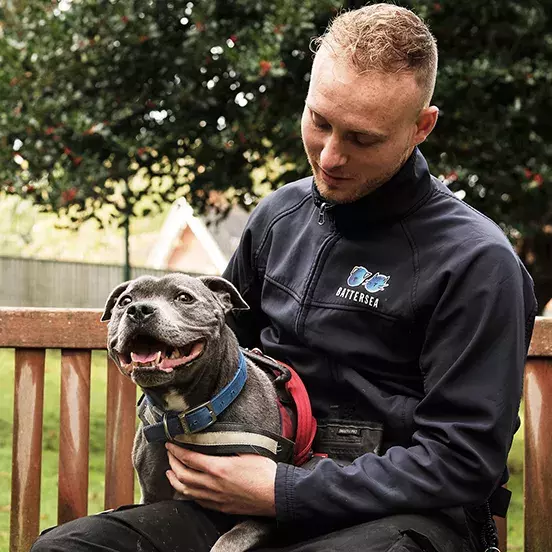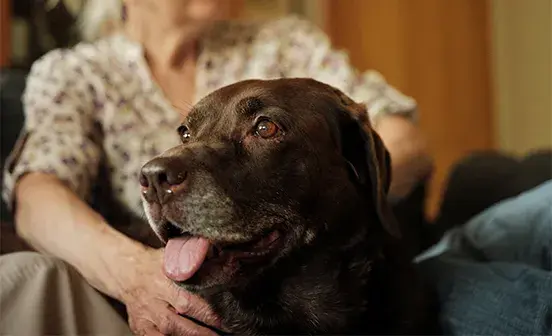At the start of June, the UK’s MPs debated reforming the Dangerous Dogs Act. It’s an issue that has long concerned Battersea. For over 30 years the law has discriminated against dogs based on looks alone whilst there has also been a tragic increase in dog bites. The law is not fit for purpose and in urgent need of reform, but successive governments have long resisted change.
The Government has committed to reviewing the evidence on this issue, something Battersea warmly welcomes. So, what is the Government’s current stance and why should it change?

WHAT IS SECTION 1 AND WHAT DOES IT DO?
Section 1 of the Dangerous Dogs Act identifies and bans four types of dog that are considered dangerous based on whether they conform to certain appearance-related breed traits; the Pitbull Terrier, Japanese Tosa, Dogo Argentino and Fila Brasileiro. Assessing whether a dog is a banned breed type is based on appearance alone, not genetic testing. Members of the public may still own a Section 1 dog, but it must be on the Index of Exempted Dogs and they must follow strict conditions, such as putting a muzzle on it in public.
PUBLIC SAFETY
The Dangerous Dogs Act was brought in to protect public safety, but the number of dog attacks resulting in hospitalisation have skyrocketed since it was introduced. After all this time dog bite incidents continue to rise, going from 3,079 in 1999 to 8,859 in 2020 – an 188% increase. The Dangerous Dogs Act skews how we assess potential danger in dogs by placing focus on the wrong thing – appearance rather than behaviour.
Instead of working with dog owners to promote responsible ownership and taking early action on dogs showing signs of aggression, the law is wrongly focused on whether or not a dog fits a subjective list of appearance-based criteria, with no regard for whether they have ever displayed any problem behaviour.
A law that protected public safety would place emphasis on dog owners taking responsibility for their pets’ behaviour and aim to prevent incidents through early intervention. The Government’s current approach is failing.
EXPANDING SECTION 1
Following a horrific spate of fatal dog incidents in the past year, there have been calls for an expansion of Section 1 to cover additional breed types. Battersea considers this approach flawed in the extreme. The response to a failing policy should not be to continue with more of the same. Adding more dogs to the list merely continues demonising dogs based on their appearance. The logical extension of this argument would be to keep adding any dog breeds involved in dog attacks to the banned list – which is ultimately unsustainable and ineffective.
FOCUS ON DEED, NOT BREED
While some advocate focusing on both a dog’s actions and its appearance (sometimes called ‘deed and breed’), this approach does not reflect that behaviour ought to be the primary factor in determining whether a dog is dangerous. Under such an approach, whether a dog matches certain appearance-related criteria would still play a major part in determining whether it can be considered dangerous.
Battersea advocates removing breed and appearance from the equation. Instead, we should be legislating on what matters most – dog behaviour and responsible dog ownership.
SHIFTING GROUND
The Government’s response to the debate showed an encouraging shift in its position. It said that breed specific legislation would not be removed without other changes made to dangerous dog laws, but looked to the responsible dog ownership project which will launch in 2023. This will explore issues around dog ownership and dangerous dogs more widely and could lead to positive changes to policy and law. The Government was keen to stress public safety will be paramount.
However, the Government maintained that it believes the overall Dangerous Dogs Act upholds public safety. The data we have on dangerous dog incidents shows that this is misguided.
EVIDENCE NEEDED
MPs who handle the many petitions from the public against breed specific legislation wrote to the Government to clarify several points not resolved during the debate in June. The letter queries how the Government intends to gather new evidence on breed specific legislation and, if it is not part of its current work, whether it will commission an independent review ‘to establish whether the banned breed types are an inherently greater risk than any legal breed or cross-breed’.
Battersea has already reported on dog breeds and bites and will be on hand to provide further evidence.
WHAT’S NEXT?
As a member of the Dog Control Coalition, Battersea is fighting to promote responsible dog ownership and early intervention as the best way to protect the public and animals. We’ll be working with the Government to demonstrate the need for a new approach to dangerous dogs that truly protects the public, not repeating the mistakes of the last 30 years.
You can find out more about our work with the Dog Control Coalition following the Battersea Public Affairs team on Twitter.


